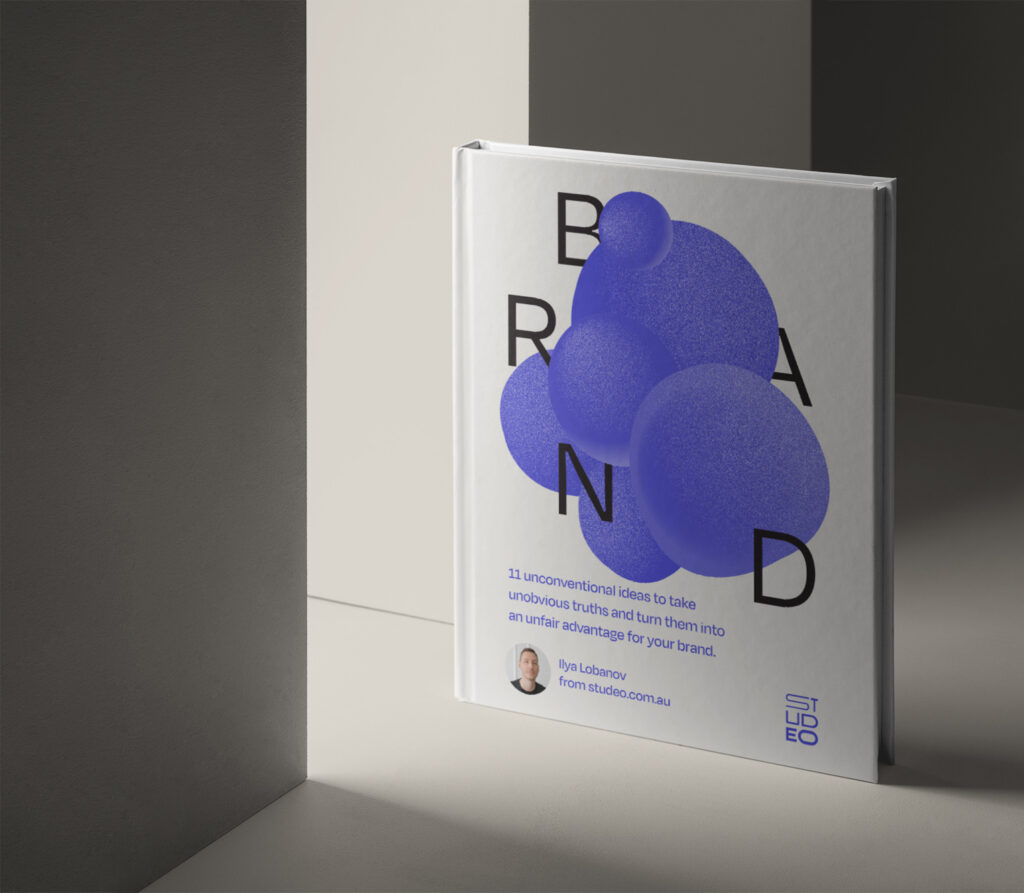I like comparing the process of translating a well-defined brand strategy into unique, relevant, and tangible deliverables to how most would define magic.
MAGIC /noun/ the power of apparently influencing events by using mysterious or supernatural forces.
Whether coming up with a strategy-led brand name, creating a packaging design for your product, or seeing overarching visuals like logo and sub graphics take shape. It can all definitely feel like magic happening before your eyes.
And perhaps this is because strategy in itself can often feel a little ambiguous until you see something concrete in front of you.
Quick sidebar: if you Google ‘how to translate brand strategy into visuals’, you will get plenty of articles about the pillars of brand strategy required to make this happen.
Things like uncovering insights about your target audience, defining a brand personality and values, defining your tone of voice, looking for a gap in the market, and more to define your strategic positioning that will guide everything else.
So to spare you reading duplicate content, I will assume that you have already gone through some kind of a strategic process to define those elements. And instead, I will focus on some practical examples that you can start implementing in your own business or for your clients.
Firstly though, why should you listen to me?
This is a valid question. Thank you for asking.
With so many ‘branding experts’, especially with the rise of Instagram and other social media platforms where a new copy/paste ‘expert’ pops up every time someone in the world sneezes, you’d be forgiven to feel skeptical.
I’ve had several creative ‘lives’. In one of my past lives (a decade ago), I worked as a lead designer at a web agency. For those of you with good memories, this was when Macromedia Flash was just becoming popular and every website owner wanted a cool animated intro.
I helped to run a web development team. Responsible for overseeing the development of apps, websites, interactive kiosks (also a thing back then). And they called me the interpreter. Why?
I seemed to possess the uncanny ability to translate the requirements from visuals to functionality and vice versa when other designers on the team failed.
Later in my other creative ‘lives’, Creative Directors only wanted me to execute a strategy, and business owners wanted to work with me directly after seeing their brands come to life visually.
All of this considering I see myself as only an above-average designer.
After 20+ years into my journey within the creative industries, I’ve understood something. The ability to translate strategy into anything is my superpower. Similarly, I could reverse-engineer visuals or a brand name back to strategic insights that might have influenced its creation.
So rest assured, what you will find in this article is not just stuff I’d read in a blog or a social media post. It’s been applied to probably thousands of real-world projects.
Where do you start with translating a brand strategy?
Before you create anything (a brand name, a logo, visuals), you will need some sort of a checklist. That checklist will need to be based on those strategic insights, and you will use it to test the validity of whatever it is you’re creating.
In most cases, a roadmap for future brand and marketing activities will be generated following the strategic workshop. And you will have access to the previously mentioned brand strategy pillars (brand values, customer needs, etc).
So your checklist can either be generated from those individual pillars or by unpacking them from the distilled Positioning Statement created for the brand in the strategy stage.
Let’s take a look at an example. A procurement business I worked with to create a new logotype. This was their positioning statement.
Through innovation and technology, we are changing the way procurement is implemented, allowing us to find creative solutions for our business partners. We will challenge you to look past the obvious solutions so that a step-change solution can be delivered. This renewed approach will give you deeper confidence and control over your contracts and suppliers.
And from that I’d unpacked four key objectives that I wanted my logo to convey:
- Create a brand that feels like a catalyst for change, with visual cues of ‘different thinking’
- Convey that the company focuses on unique solutions for clients, not one size fits all
- Position the brand as a partner for the client rather than another transaction (most of the competitors were cold and corporate in nature so we wanted to be positioned as a human brand)
- Convey innovation, providing creative solutions, and going beyond the obvious
Naturally, this should stimulate plenty of ideas to generate visuals for the logo design or other deliverables. And similarly, these become objective anchors and items you can ‘check off’ a list whenever validating or presenting design options to the decision-makers.
You can use a tool like the Morphological Matrix to list your objectives, then generate ideas for each, and then mix-and-match until you have some novel and unique ideas, while still objectively communicating the desired aspect/s for that brand.
Grab a copy of the Worksheet that contains the Morphological Matrix and other idea-generation tools by joining this Creativity Challenge here.
Another useful framework for generating the checklist
I will begin by saying that frameworks aren’t something that should be implemented blindly. Everything is contextual. A framework is only a toolbox that helps you to frame the work.
But ultimately, this simple framework can be a great start to create a valid checklist. It can even be implemented regardless of whether you have a brand strategy document and insights to work with or not.
Whenever I create a checklist I make sure to cover each key aspect of a brand that is important to communicate.
At the very least, these will be:
- What is the brand’s customer’s pain point/s?
- What is the brand’s promise or story?
- What is the brand’s USP or differentiation?
- What is the brand’s customer’s transformation?
Customer’s Pain Points – What are the key pain points, challenges, or obstacles that customers might be facing when using similar products or services?
The Promise – What do you promise to your customers if they use your product or service?
The USP – What makes your product or service different?
The Transformation – What happens differently when your product or service is implemented?
For each of these four sections, distill the answer into 2-3 keywords that you will then be able to use as your ‘checklist’ for creating brand deliverables.
When you’re generating the adjectives think of them in the context of a trait for your brand as if it were a person. These make it easy to generate ideas for your business name, product name/s, logotype ideas, a tagline, or virtually anything else.
So let’s say if Google were to do this exercise they might end up with something like this:
Customer’s Pain Points – Too many distractions on other platforms to enable a seamless search. You might generate adjectives like seamless, minimal, easy.
The promise – Create a search platform accessible to all humans. You might generate adjectives such as accessible, convenient, universal.
The USP – Predictive search recommendations based on data collected on each user’s preferences. Adjectives might be well-informed, intuitive, resourceful.
The Transformation – As if by magic, users can find more relevant results than anywhere else. Adjectives that come to mind are magical, dynamic, wise.
Can you see how Google’s brand, logo, and overall interface all play into and communicate these types of adjectives?
Can we have more examples please, Ilya?
Speaking of Google, let’s take a look at a few other well-known brands. And try to see if we can reverse-engineer how they might have created their visuals or other brand assets.
Example number one
We believe in making the whole world a big community that we all belong to. We connect our guests with unique authentic local accommodation experiences provided by our host at competitive prices anywhere and everywhere, utilising the power of technology.
This is a positioning statement for a brand you most likely have heard of. Can you guess the name?
That’s right. Airbnb.
They do a great job connecting to the Customer Needs of belonging and community, by using inclusive, inspiring language and imagery choice and creation of sub graphics.
Their icons are friendly and inviting, projecting a feeling of warmth and belonging. Airbnb carefully considers every communication and element of its website to make sure it communicates in a way that will resonate with its customers.
Example number two
Entertainment, like friendship, is a fundamental human need; it changes how we feel and gives us common ground. We want to entertain the world. If we succeed, there is more laughter, more empathy, and more joy. We believe that great stories are universal: they come from anywhere and are loved everywhere.
Let’s see if we can guess the brand from the above statement.
Entertainment. Universal stories.
If you guessed Netflix, you would be correct. The way they live and breathe through their culture and values is evident in the way they approach their business. Netflix is one of the few platforms that doesn’t interrupt viewers’ experience with countless advertisements.
But it’s also clear to see how they might have approached the design of their now-iconic red logo and the ribbon N symbol. They say that the N brand symbol represents connection and a never-ending stream of stories to our subscribers, whilst the arc in the full logo version is a nod to the vintage CinemaScope lens. But you can see how it also manages to allude to the ‘globe’ and ‘world’ references from the statement above.
Example number three
To offer a wide range of well-designed, functional home furnishing products at prices so low, that as many people as possible will be able to afford them. To create a better everyday life for many people.
No golden stars or medals for guessing this brand. IKEA is a great example of staying current in terms of its service offering, whilst remaining true to its values and mission. But what about the connection between their strategic pillars and the brand execution?
The logo wasn’t always blue and yellow. But cleverly, IKEA recognised the opportunity to reference their Swedish heritage, while simultaneously representing trust, openness, happiness, optimism, and imagination – all key pillars for the brand.
And you can also see how the current logo references the globe and world through the use of that oval shape, alluding to ‘many people’. While the rectangular logo shape may allude to the strong brand pillars and provide structure for the brand (as well as their furniture being stable, functional, and reliable).
Now over to you
If you enjoyed reading this article, consider signing up for the Studeo Insider, and receive more insights like this one. If you know someone who might enjoy this article, please share it. If you have any questions or would like a chat, please reach out via email or on Instagram, I’d love to hear from you!

